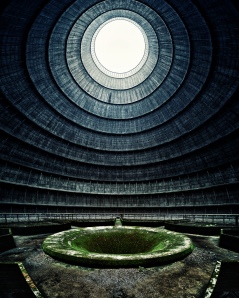Abandoned places. Stunning visuals.
I am of the mind that abandoned places have something, analytically, to contribute to infrastructure studies. Once you click the link, you’ll see that the producers of this compilation (not sure how many pictures are truly “there’s”) suggest with the opening lines that this is something about what the entire world would like without people, which is sort of a pseudo-apocalyptic comment on global warming, the end of days, and curiosity about “a world without people” (anymore — or this documentary about life after people). The first lines read:
These real life ruins offer an eerie glimpse into a world without humans. Their dark walls inspire a sense of wonder like I’ve never felt before.
This should surprise no one. Perhaps the thought experiment is a good one for students, but generally thoughtful people don’t have to let their minds wander/wonder too far to know what a world without people would look like as our infrastructures remain slowly giving way to the elements.
What else might infrastructural relics like these tell us? Surely, it is fair to say that they would teach us something new every time we returned to them. However, one of the points that these might tell us, which archeologists and anthropologists have claimed for more than a century (and quite longer, I would guess), is that infrastructural remains indicate more than just “people” were here. Many of these remains (pictured above) are not ancient, either, so we don’t need to impose meanings on where these structures came from or how they were used in antiquity. These are contemporary ruins that sit precariously alongside “life as we know it” now. The point? Some, but not all, are state projects, meaning, of course, real people on the ground ultimately produced the structures that “remain,” but the attributional source of the work is a non-human entity called “the state” … these are pieces of evidence that the state exists somewhere, somehow. How to harness that insight for state theory would be a great bridge to infrastructure studies (and infrastructural relics might also be a nice play on literature for infrastructure studies that would sort of be like the relationship between STS and disaster studies, although, there is something really nice about a slow decay as compared to a momentary boom found in most disaster studies — exceptions, of course, exist).

Pingback: End of Year Reflection | Installing (Social) Order
Pingback: Gearing-back-up on Thursday (9 Jan 2014) | Installing (Social) Order
Philip, That is a fascinating case that I did not know about (although, I had a faint idea that arrangements like those did exist). Interesting case for state theory; seems that law has tackled the issue of micronations, but state theory appears silent about the matter, at least, to my reading.
LikeLike
“neoliberal shock therapy” is a great phrase. Thanks for the abandoned spots in Poland … any chance that we’ll see a couple when we all visit Poland this fall?
LikeLike
There is a polish site devoted to abandoned places: http://www.opuszczone.com/index_en.php?s=home_en (yes! it is available in English)
This site and abandoned railway depot is nice proof what happened with state “organism” after neoliberal shock therapy (Naomi Klein). Polish provincial infrastructure, after series of “free market” reform is vivid and sexy like McMurphy at the end of “One Flew Over the Cuckoo’s Nest”.
LikeLike
Vis-a-vis the abandoned sea forts check this out: http://en.wikipedia.org/wiki/Principality_of_Sealand
LikeLike
Reblogged this on synthetic_zero.
LikeLike
http://anthem-group.net/2014/01/01/your-infrastructure-will-kill-you-eleanor-saitta/
LikeLike
There is a polish site devoted to abandoned places: http://www.opuszczone.com/index_en.php?s=home_en (yes! it is available in English)
This site and abandoned railway depot is nice proof what happened with state “organism” after neoliberal shock therapy (Naomi Klein). Polish provincial infrastructure, after series of “free market” reform is vivid and sexy like McMurphy at the end of “One Flew Over the Cuckoo’s Nest”.
LikeLike
I am reminded of this old post about sexy infrastructure: https://installingorder.org/2013/09/28/sexy-infrastructure/
LikeLike